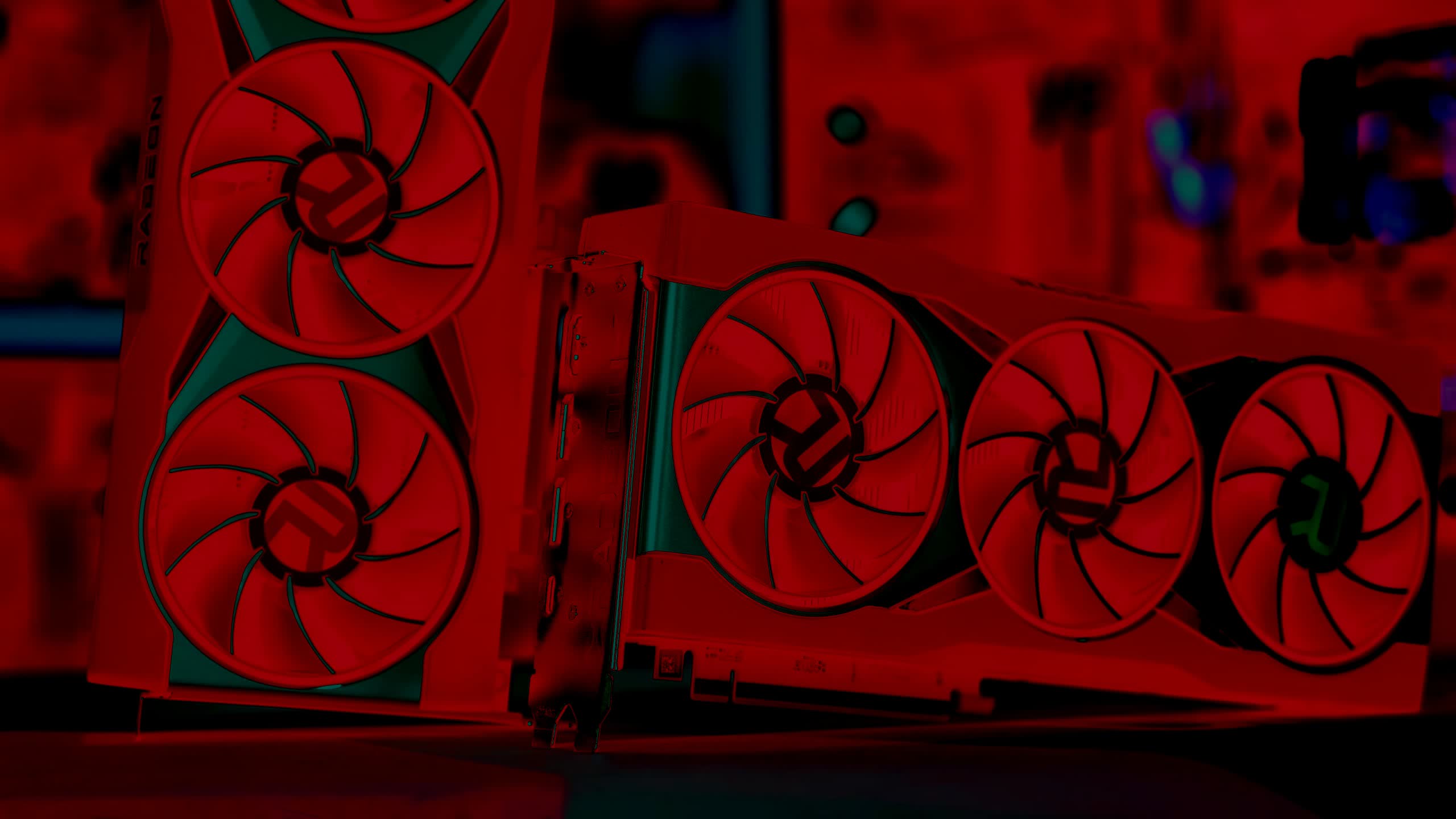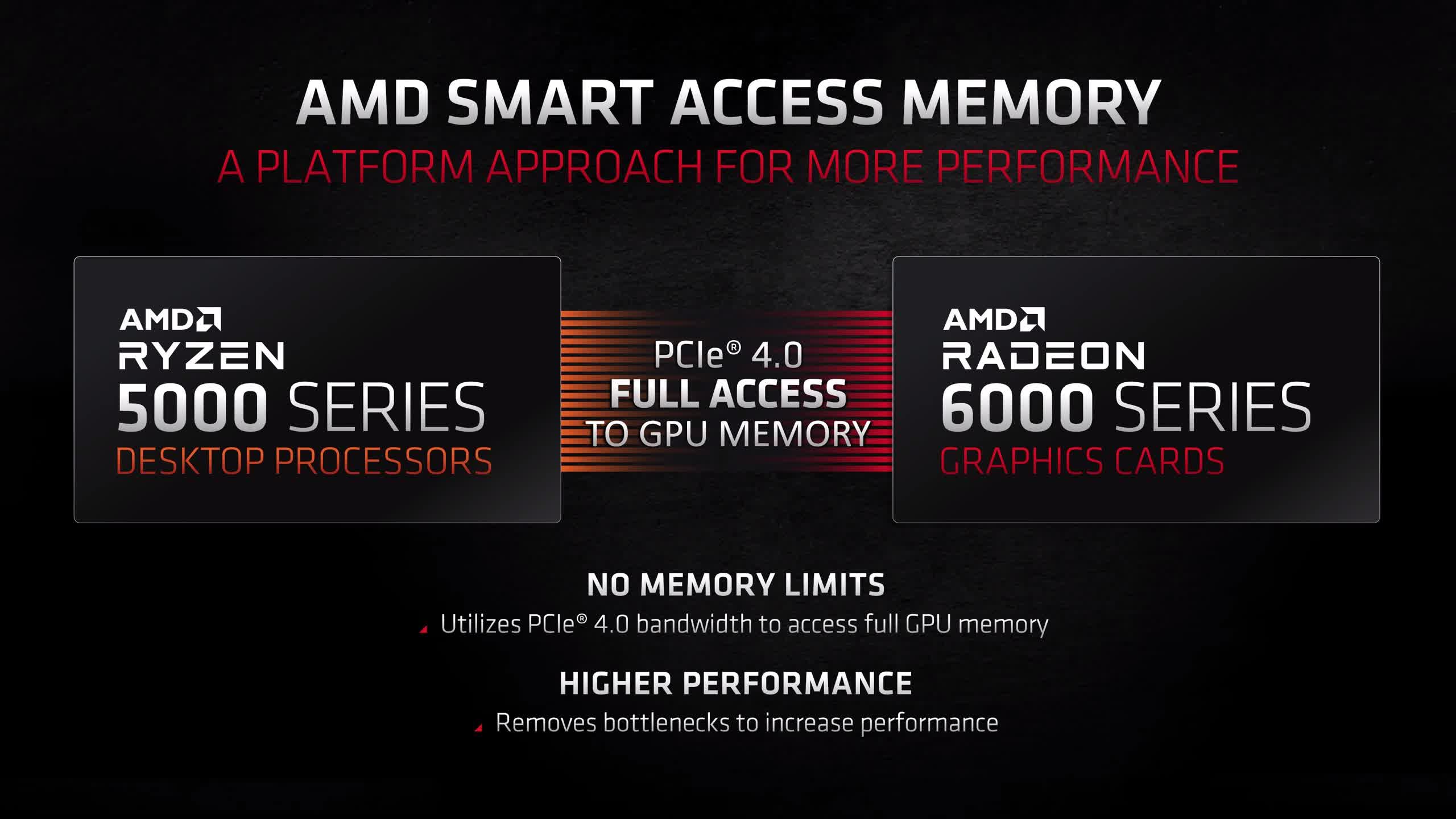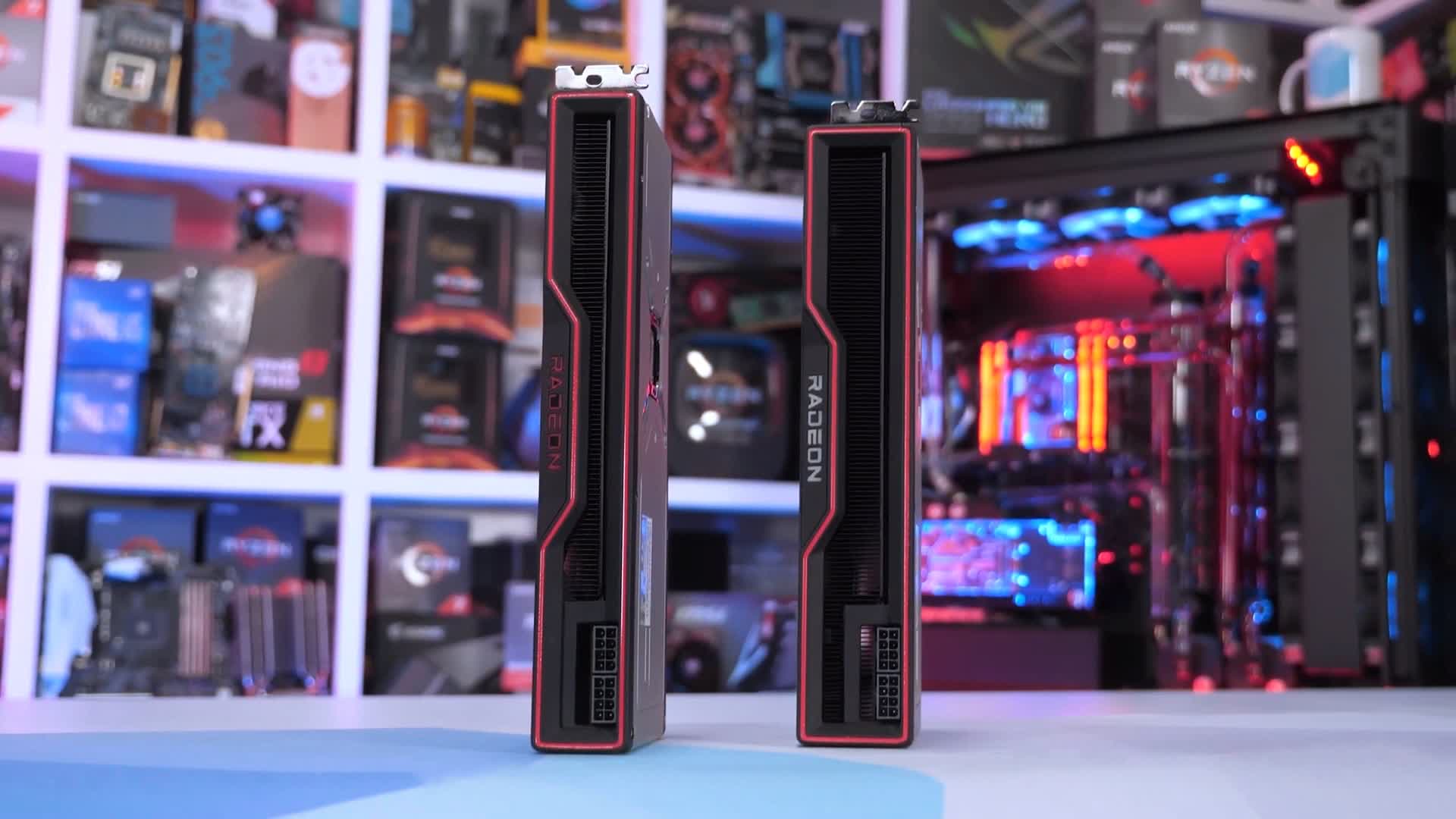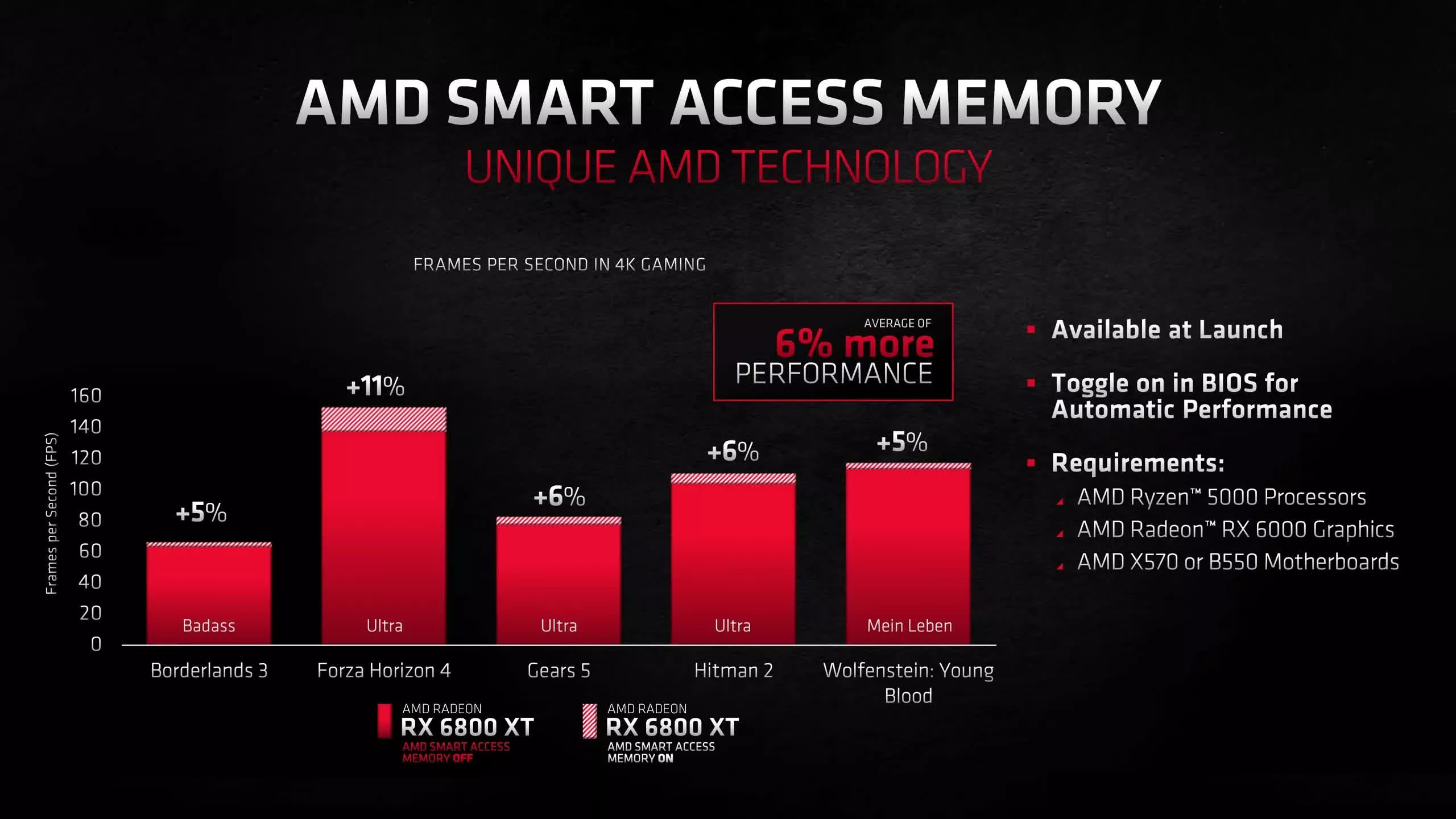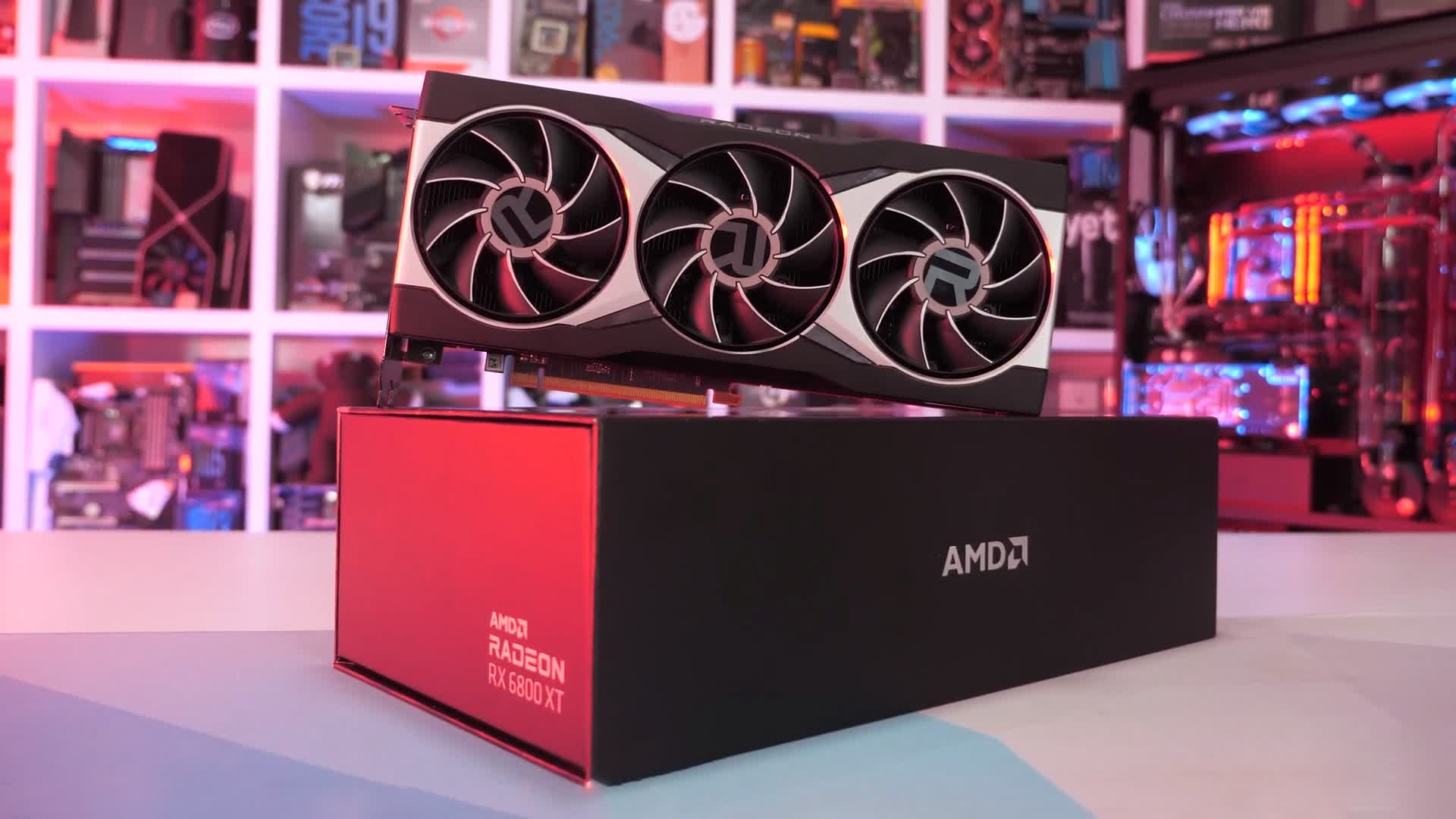Today we're taking a detailed look at how AMD's Smart Access Memory (SAM) technology influences performance in a wide range of games. All in all, we plan to benchmark 36 games at 1080p, 1440p and 4K. While technically SAM is not an AMD-exclusive technology, they are the first to take advantage of the resizable Base Address Register or resizable BAR, a feature introduced with the PCIe 3.0 spec.
For those of you not yet up to speed, SAM or resizable BAR defines how much of your graphics cards VRAM is to be mapped for access by the CPU. Typically the CPU can access up to 256 MB of mapped VRAM, but with the resizable BAR it can have full access to the graphics cards' VRAM buffer.
There's no real reason why the 256 MB limit exists, it was put in place back in the 32-bit era and hasn't been altered since. However, for the most part there's been no need to make any changes to this limit either, as high-end GPUs typically feature wide memory buses and therefore have significantly more memory bandwidth at their disposal when compared to system memory.
Notwithstanding, AMD took a different approach with RDNA2 by using a 256-bit wide memory bus in conjunction with their Infinity Cache, and they felt it was time to take advantage of this feature and squeeze some extra performance that would let them be more competitive against Nvidia's Ampere.
It's worth noting that as of writing, AMD's only offering SAM support with the new RDNA2 GPUs when paired with a Ryzen 5000 processors on a 500 series motherboard. That makes the feature less appealing and restrictive, even though with some extra work in theory this could be offered on all current AMD and Intel platforms. Nvidia has also come out to say they will be enabling SAM on GeForce GPUs via a driver update, while stating that they've got it working on both AMD and Intel platforms. Nvidia has yet to deliver on that promise although it's only been a few weeks since.
| GeForce RTX 3080 |
Radeon RX 6900 XT |
Radeon RX 6800 XT |
Radeon RX 6800 |
|
|---|---|---|---|---|
| Price (MSRP) | $700 | $1000 | $650 | $580 |
| Release Date | Sept. 2020 | Dec. 2020 | Nov. 2020 | |
| Process | Samsung 8N | TSMC N7 | ||
| Transistors (billion) | 28.3 | 26.8 | ||
| Die Size (mm2) | 628.4 | 519 | ||
| Core Config | 8704 / 272 / 96 | 5120 / 320 / 128 | 4608 / 288 / 128 | 3840 / 240 / 96 |
| Core Clock Frequency | 1440 / 1710 MHz | 2015 / 2250 MHz | 2015 / 2250 MHz | 1815 / 2105 MHz |
| Memory Capacity | 10 GB | 16GB | ||
| Memory Speed | 19 Gbps | 16 Gbps | ||
| Memory Type | GDDR6X | GDDR6 | ||
| Bus Type / Bandwidth | 320-bit / 760 GB/s | 256-bit / 512 GB/s | ||
| TGP | 320 watt | 300 watt | 250 watt | |
Officially AMD has yet to acknowledge SAM support for 300 and 400 series chipsets (as well as Ryzen 3000 and older processors), but motherboard makers have put in the work and some older motherboards now support the feature. We've also heard reports of SAM even working on select Intel Z490 motherboards and separately on Radeon RX 5700 GPUs on B450 motherboards, so that might be something worth exploring eventually.
Now, after our GeForce RTX 3070 vs. Radeon RX 6800 comparison, we noticed a small number of people complaining that we didn't test with SAM enabled and therefore claimed the comparison was unfair, misleading, used poor testing methodology, and so on... All that nonsense aside, there are good reasons why we don't test with SAM enabled by default. For once, it's supported by a single processor series at the moment, using one of two chipset options. The other key reason is that even with the right processor and motherboard combination, resizable BAR isn't enabled by default.
Typically, we like to provide out of the box performance, with the only exception being XMP which is literally the only thing we enable for both AMD and Intel systems. Everything else is left as stock, which is why we test Intel processors without enforcing the TDP limits, as that's not the out of the box experience for most Z490 motherboards.
Back to today's test, we've got the Radeon RX 6800 set up with resizable BAR and 36 games to be benchmarked. We're using a Ryzen 9 5950X test system, armed with 32GB of DDR4-3200 CL14 memory in a dual channel, dual rank configuration.
Representing the GeForce camp is the RTX 3070 Founders Edition, while the Radeon GPU is represented by AMD's reference card, both are clocked at stock with no overclocking.
Benchmarks
Assassin's Creed Valhalla is currently the best showing for SAM that we've come across. We're looking at a 20% performance uplift at 1080p, taking the RX 6800 from 103 fps on average to 124 fps. The RX 6800 was already faster than the RTX 3070 in this title, now we're looking at a huge 57% performance advantage.
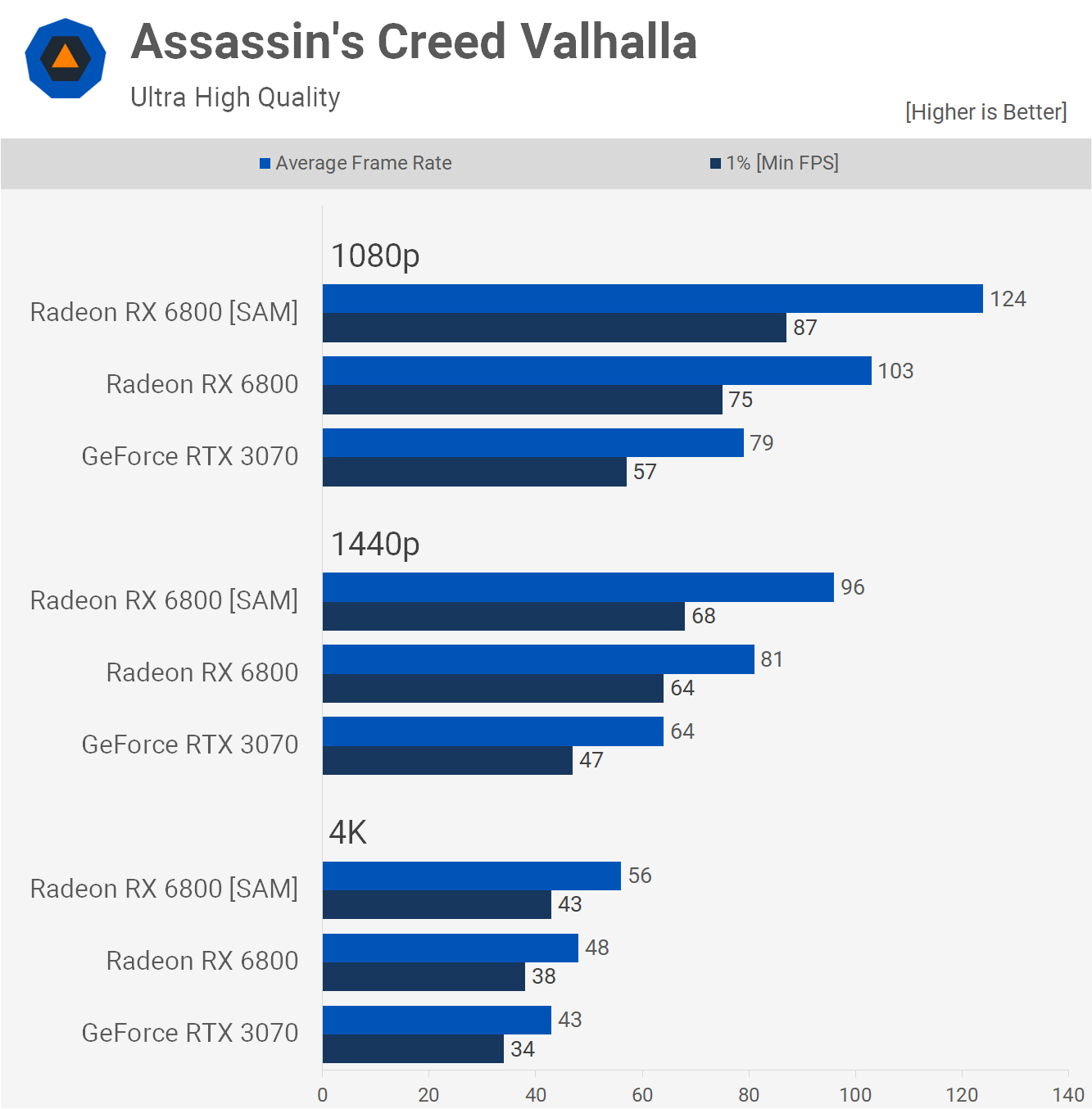
At 1440p we're looking at a 19% performance improvement with SAM enabled and a 17% increase at 4K. The 4K gains are extreme as it takes the experience from somewhat unplayable to playable, and should you dial back the quality preset one setting, the game would be very smooth.
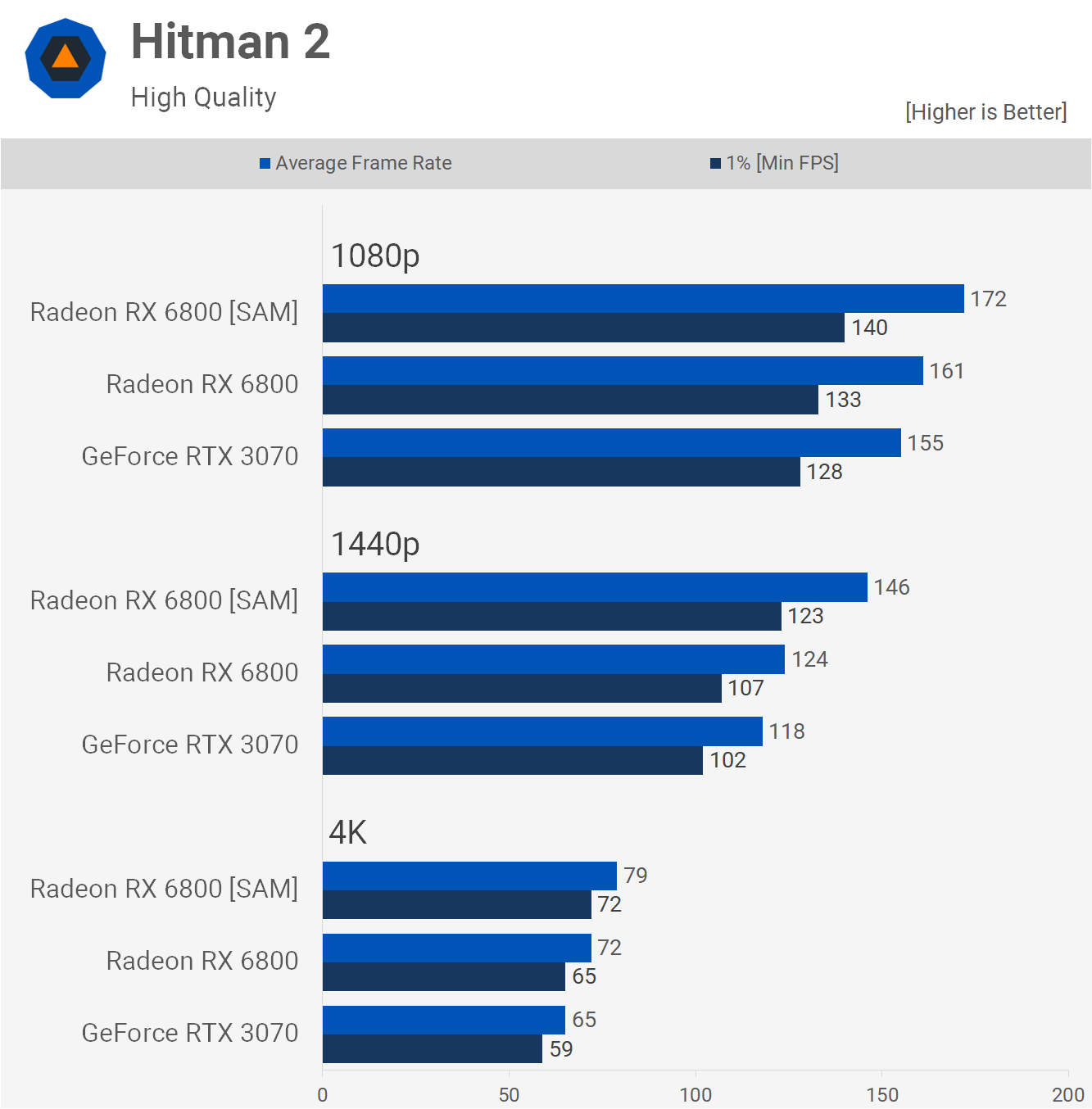
Moving on to Hitman 2, we have some strange numbers. At 1080p we're looking at a decent 7% performance uplift, which is cool considering it's free performance. It's strange though because at 1440p we see a much bigger 18% performance boost and typically when we see this you'd assume some kind of system bottleneck at 1080p, like a CPU limitation.
That being the case you'd expect to see similar gains at 4K when compared to 1440p, however the margin drops down to 10%, which is still an impressive gain but it makes the 1440p data appear quite odd. We went back and retested only to get the same numbers.
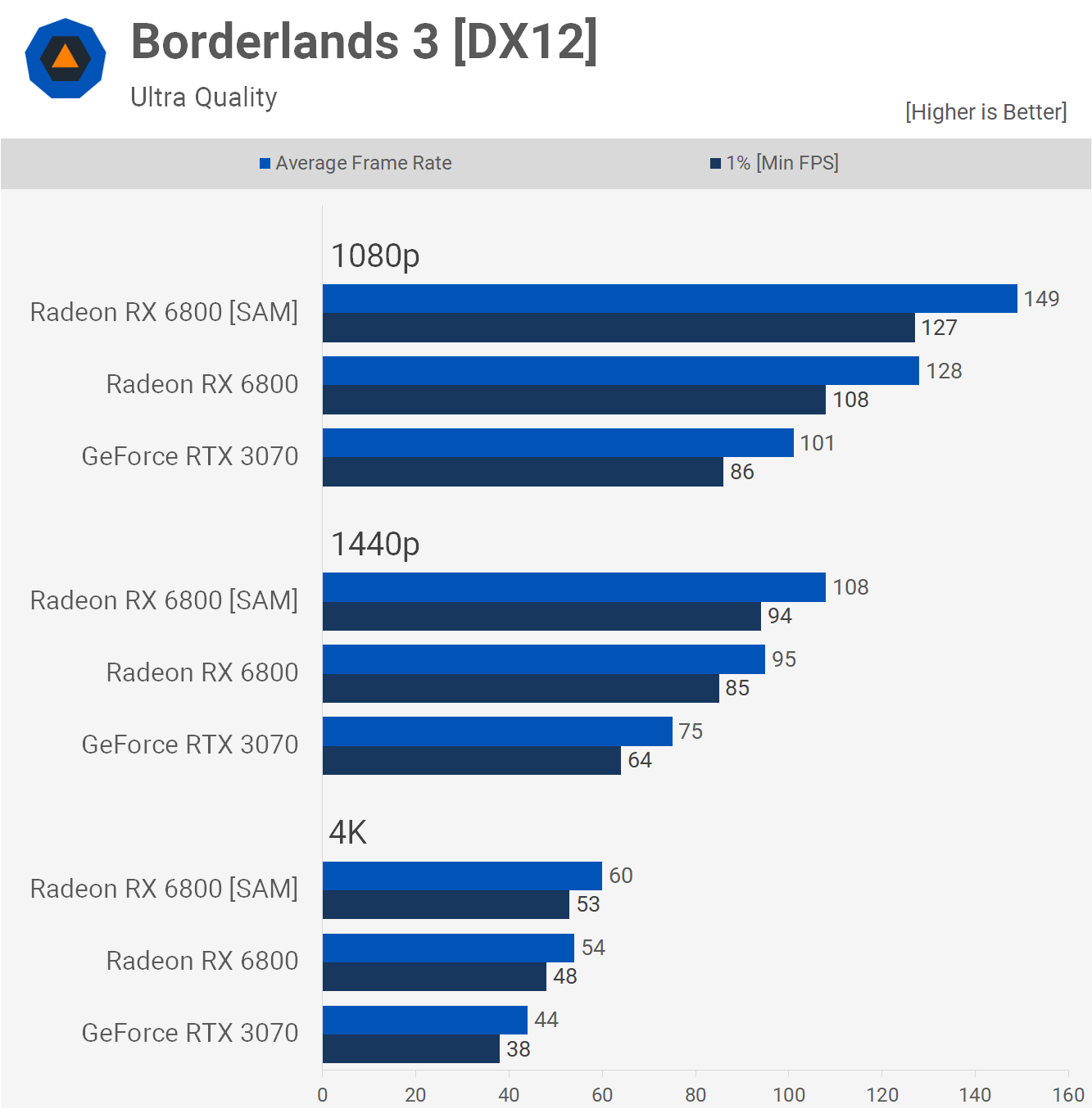
Performance in Borderlands 3 is impressive. We're looking at a big 16% performance boost at 1080p which is great to see. We're also looking at a 14% performance boost at 1440p and that means the RX 6800 is now 44% faster than the RTX 3070.
Interestingly the smallest gains are seen at 4K, but even so we're still looking at an 11% improvement and double digit gains are nothing to sneeze at.
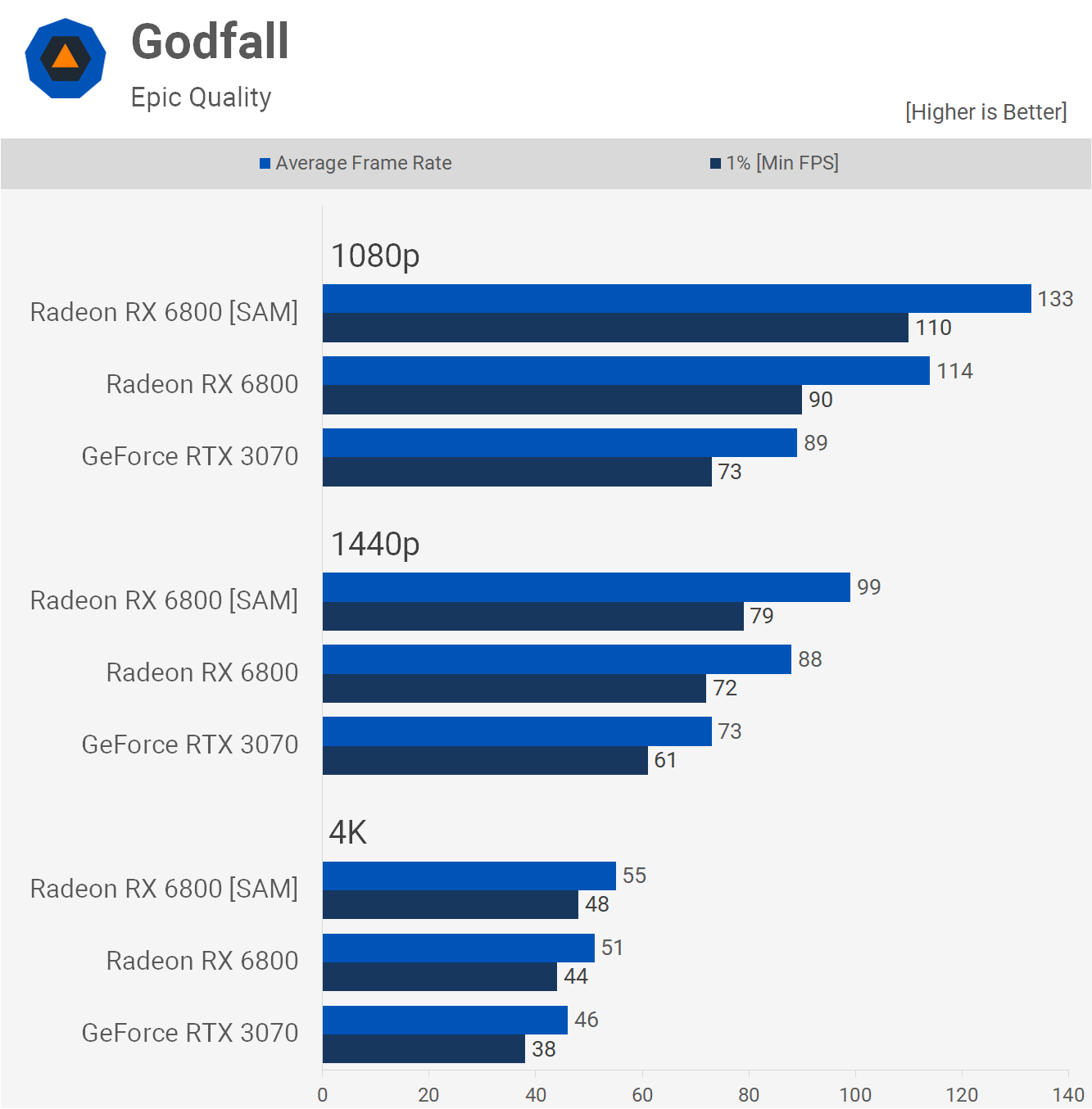
Another title where SAM is of great benefit is Godfall. We're seeing a strong performance boost at 1080p as the RX 6800 becomes 17% faster, offering almost 50% more performance than the RTX 3070.
As we've seen previously though, the performance boost is reduced as the resolution increases, dropping to 13% at 1440p and 8% at at 4K.
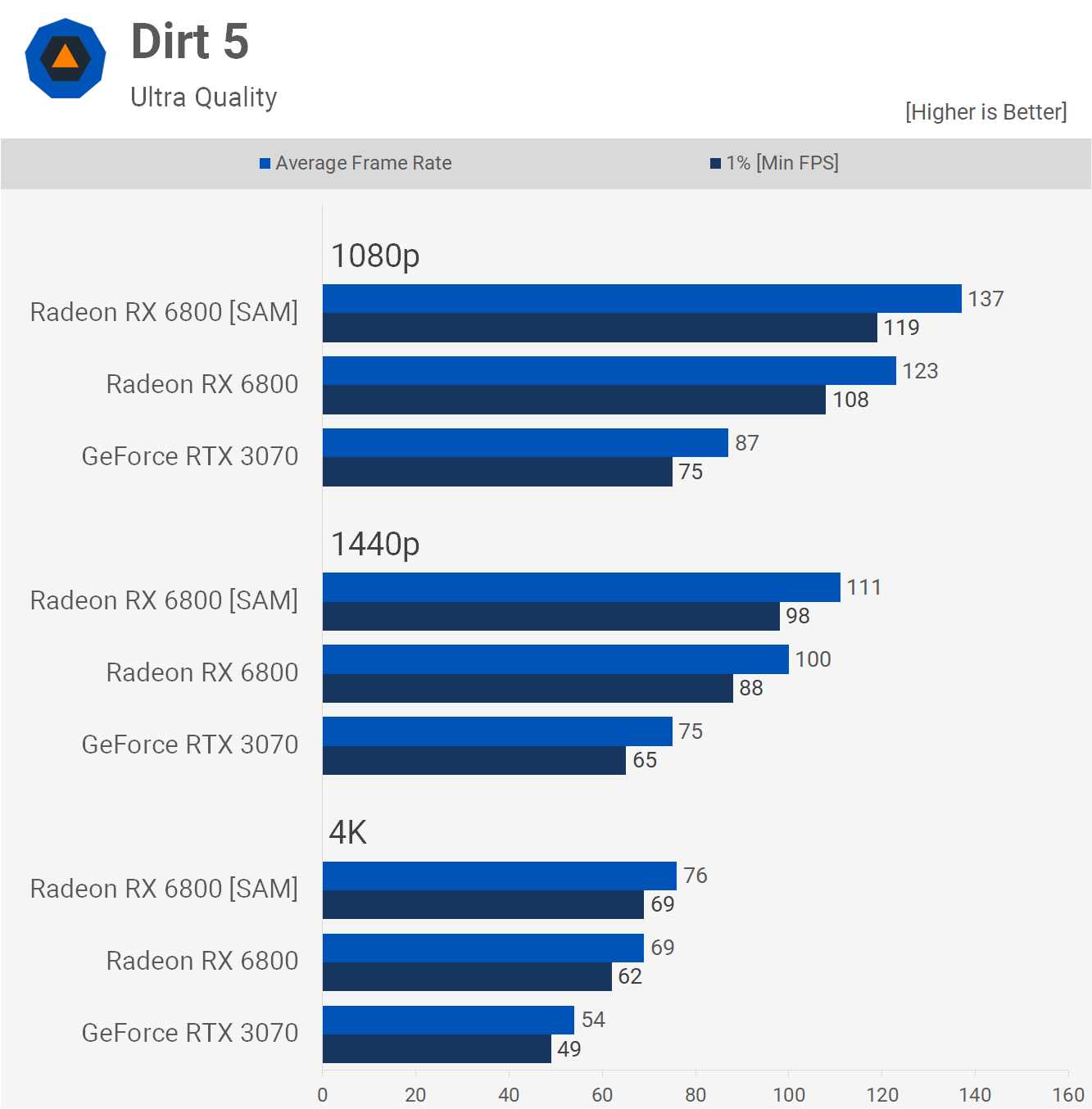
Dirt 5 is another game that benefits from enabling SAM. We're looking at an 11% boost at 1080p and 1440p, with a 10% boost at 4K. A consistent improvement across the three tested resolutions for this racing game.

Now for the games where SAM does not really make a big difference.
F1 2020 sees a minor 4% boost at 1080p, 2% at 1440p and nothing at 4K. That's not a bad result as any extra performance is welcomed, but it's mostly negligible.

We're looking at an up to 3% performance boost in Death Stranding at 4K, taking us from 93 fps to 96 fps.
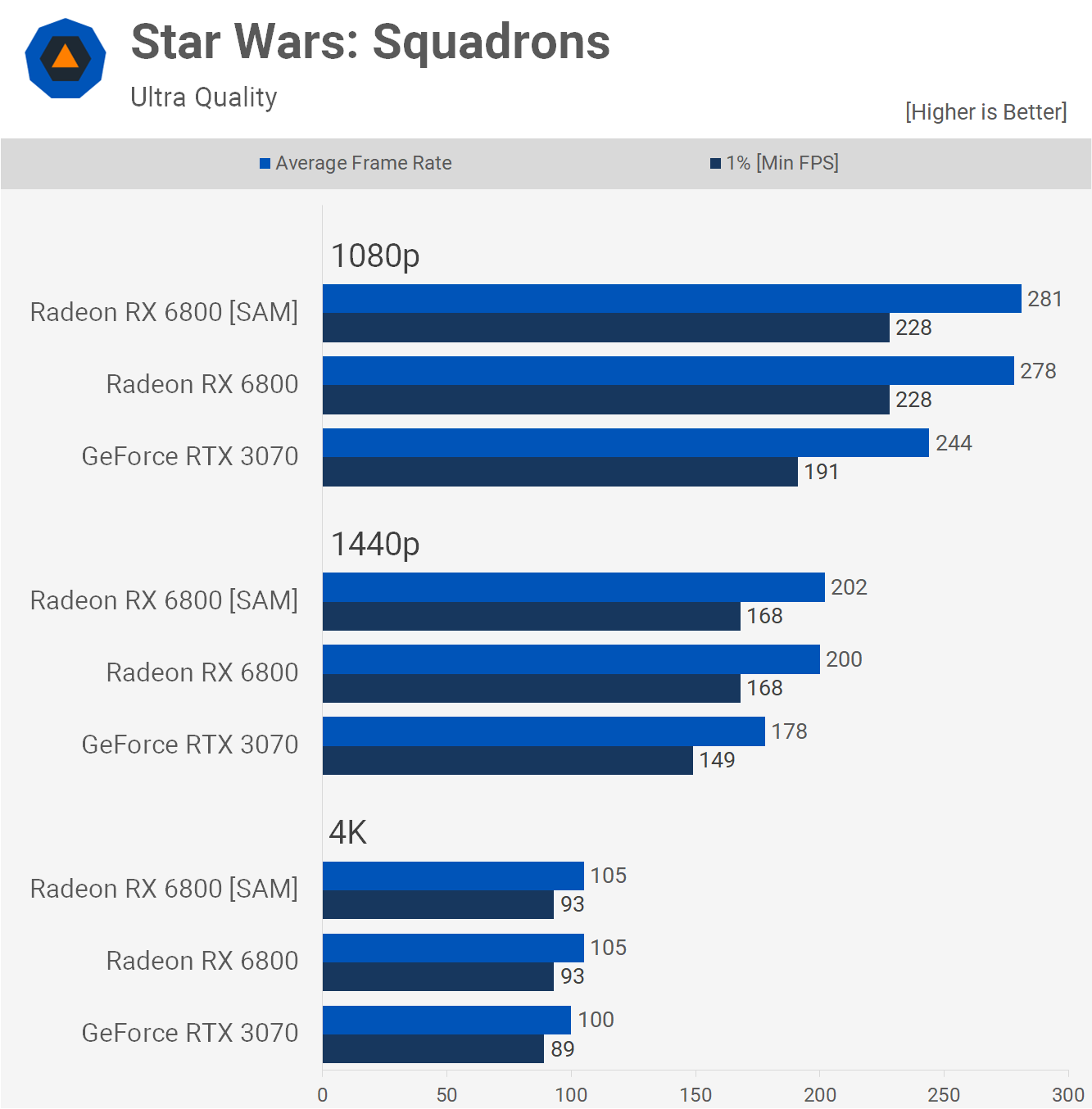
Star Wars Squadrons sees little to no performance improvement with SAM enabled, but at least it doesn't hurt performance either. As you're about to see that isn't always the case.
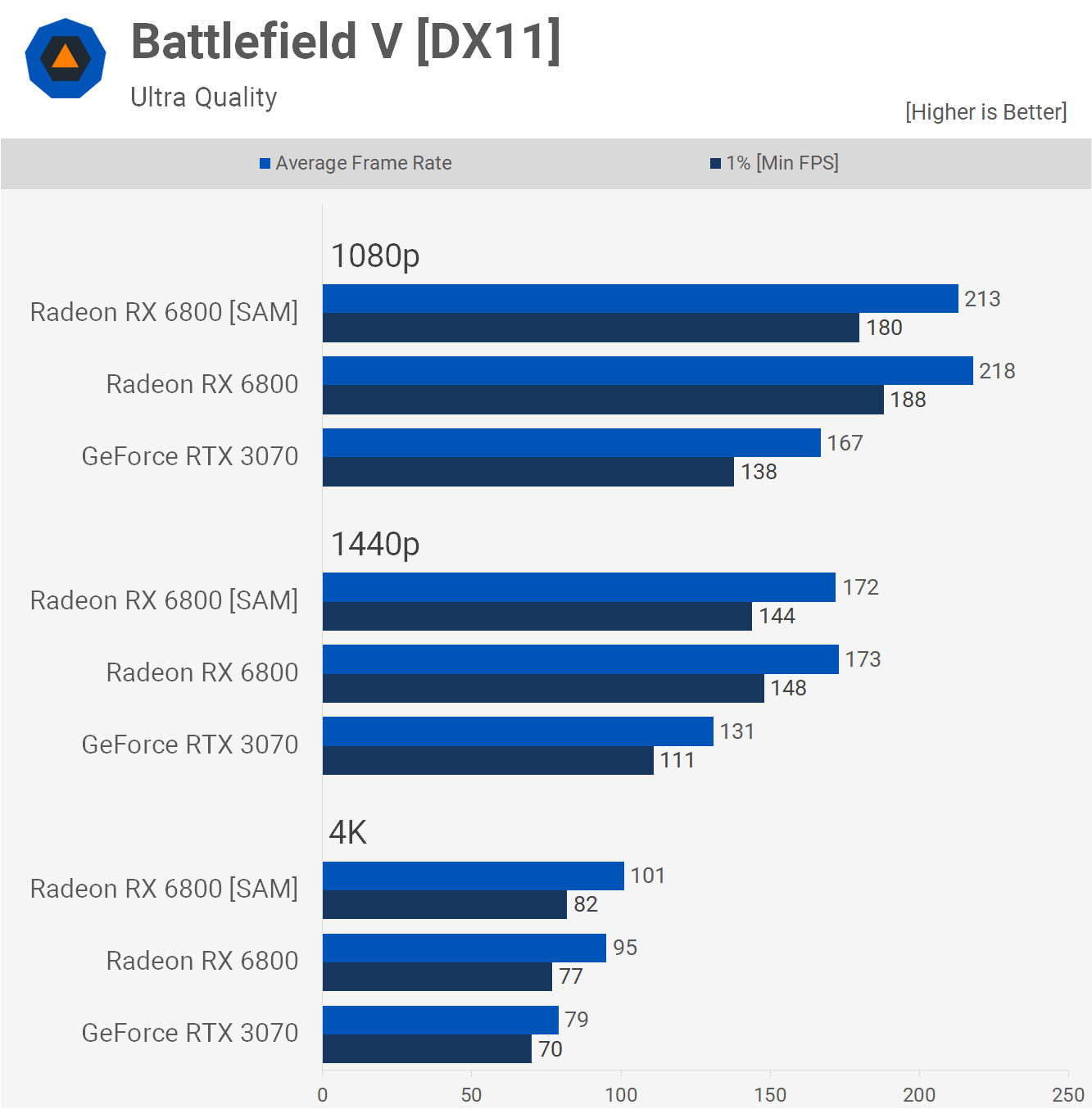
In Battlefield V we saw a small 2% performance regression at 1080p. The 1440p results are within the margin of error, and then we see a 6% boost at 4K which is nice.

Performance with SAM in Control was very similar to that of Battlefield V, we're looking at no performance improvement here with a slight regression at 1080p.
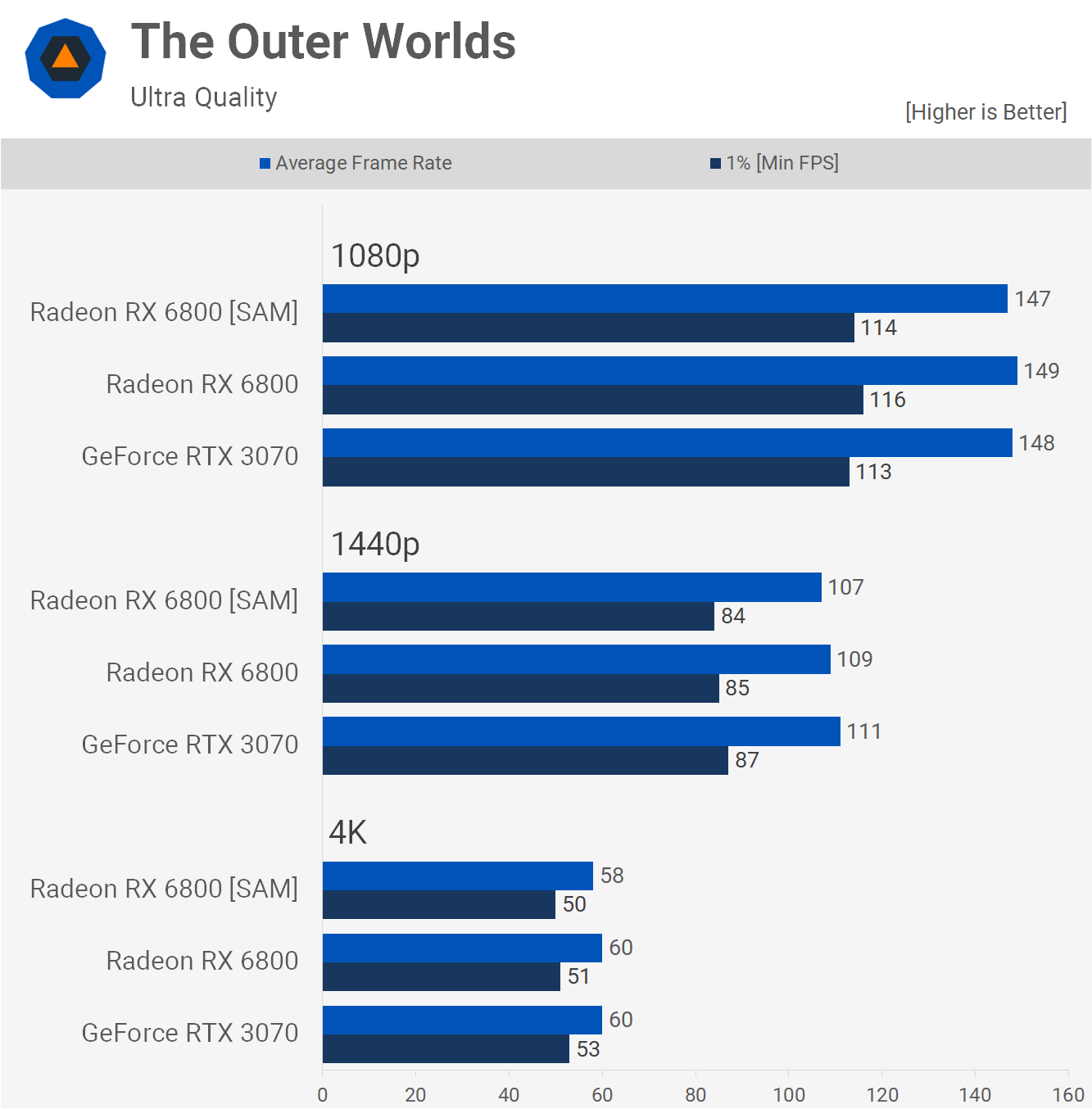
The Outer Worlds shows no performance improvement at 1080p though there's a small performance regression at 4K (a mere 2 fps).
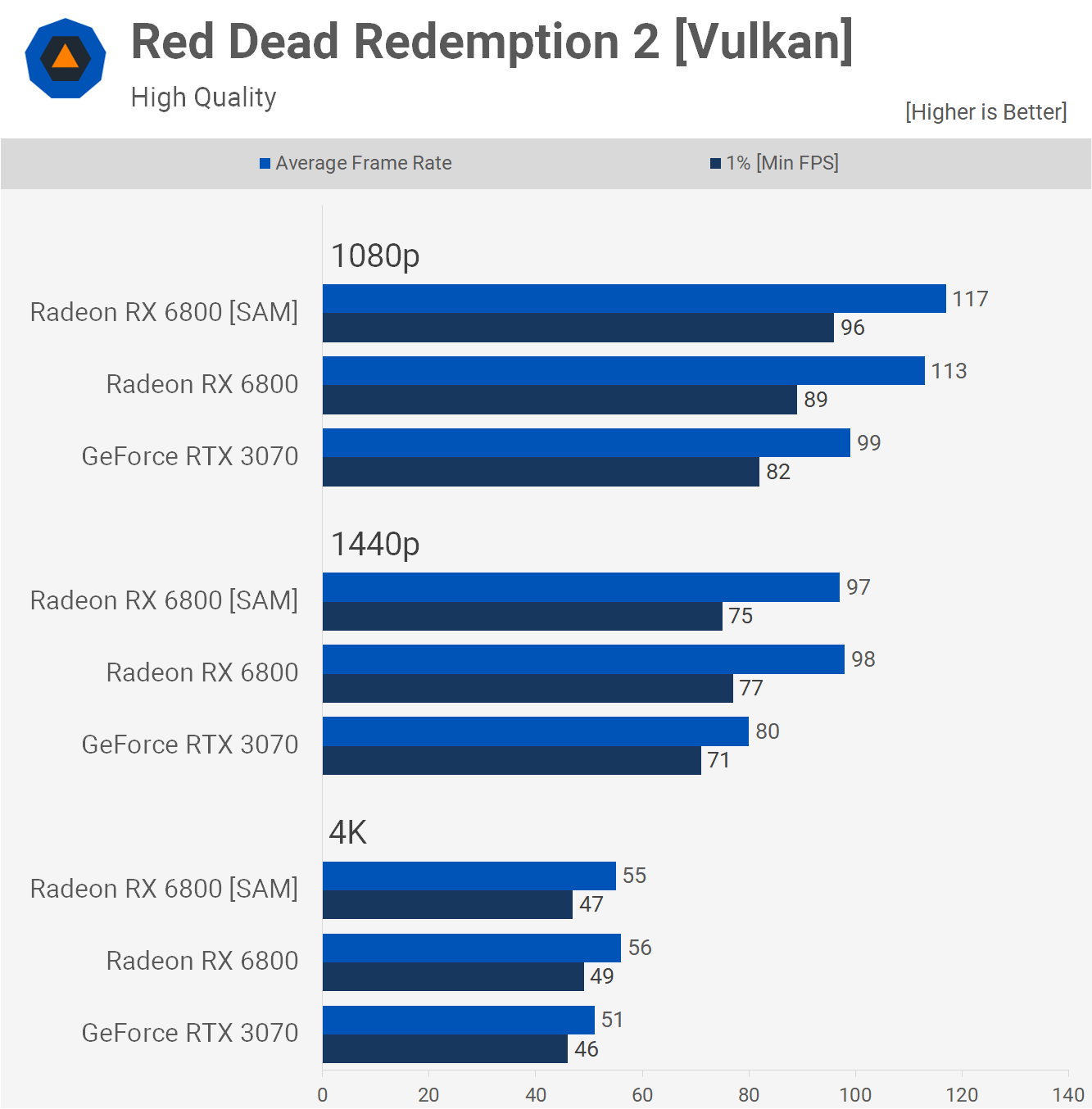
Red Dead Redemption 2 results are mixed as we see a nice 8% improvement in 1% low performance at 1080p, but beyond that performance is slightly lower at 1440p and 4K.
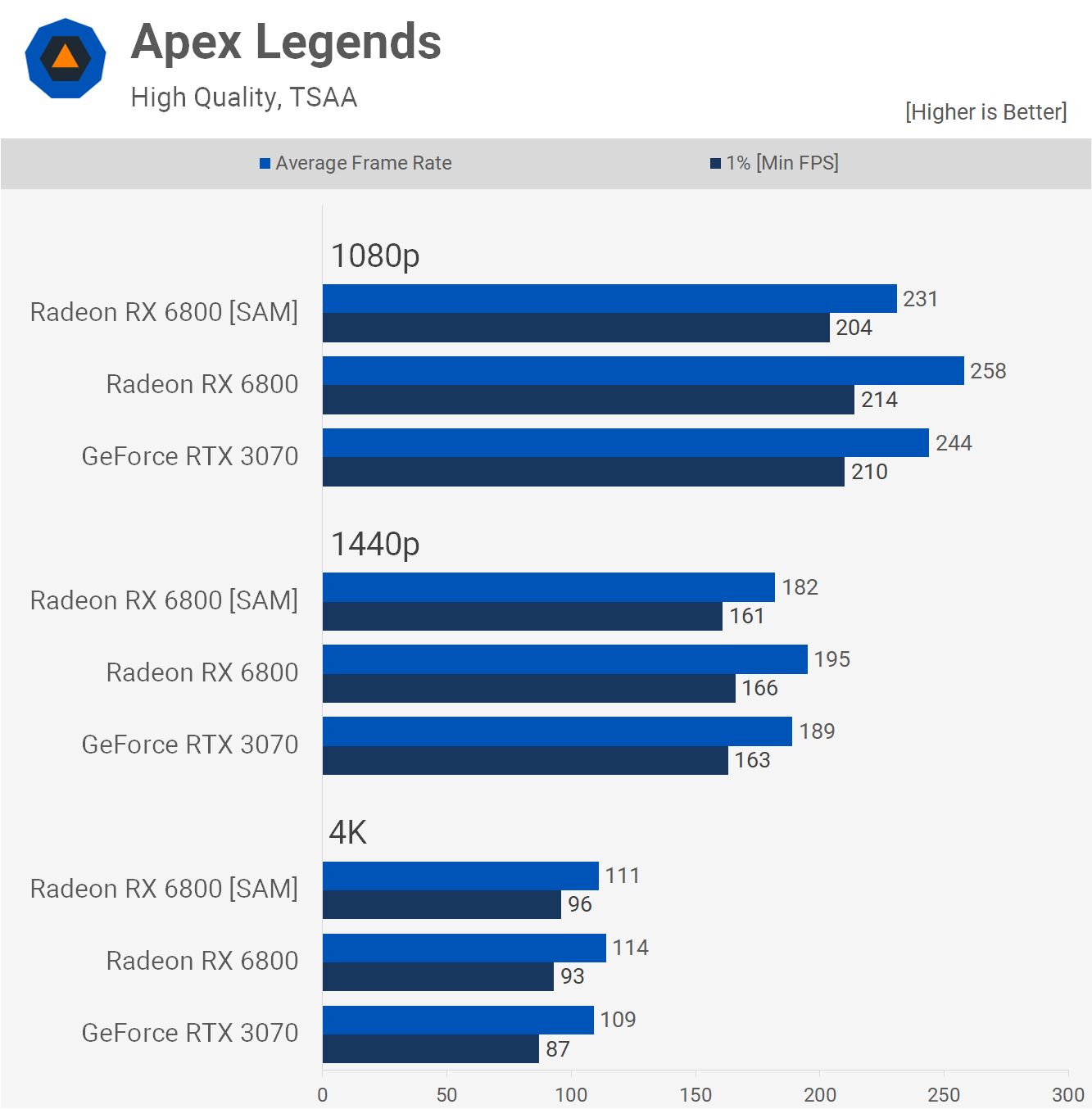
Performance in Apex Legends isn't great with SAM enabled, we're looking at a 10% drop at 1080p, 7% at 1440p and then similar performance at 4K, so overall not a great result for SAM.
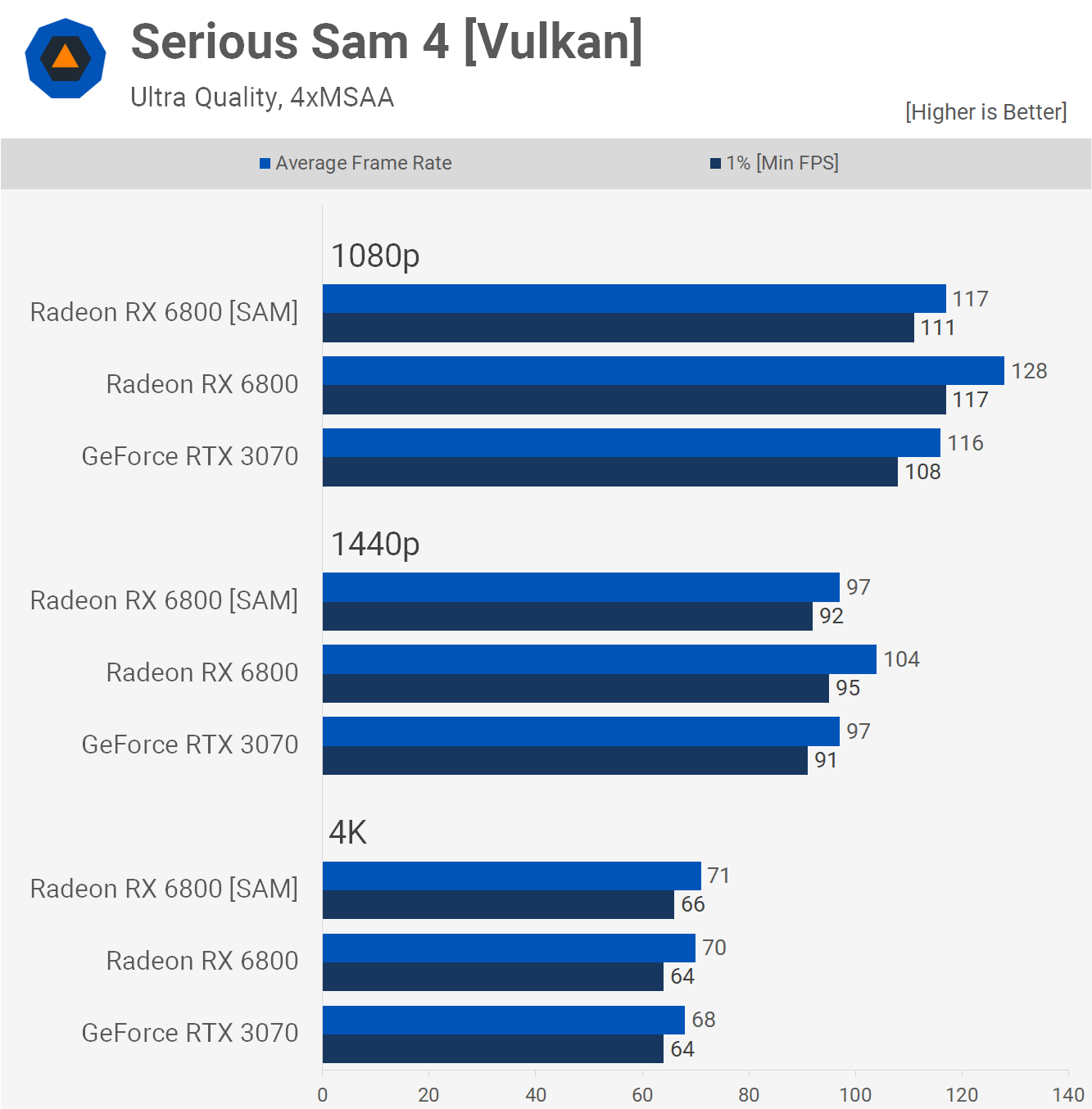
Serious Sam 4 also didn't like SAM, dropping 9% at 1080p and 7% at 1440p.
Performance Summary
The effectiveness of SAM or more accurately resizable BAR is very much game dependent and in some instances we saw performance go backwards. So far we've looked at about a dozen of the games tested, so let's now see how performance compares in all 36 games.

Starting at 1080p, we see that on average across the 36 games tested, enabling SAM was good for a small 3% increase. Of course, we did see gains as high as 20% in Assassin's Creed Valhalla, 17% in Godfall and 16% in Borderlands 3. But we also saw little to no improvement in nearly half the games tested (margins of 2% or less).
Meanwhile margins of 4% of less were seen in well over half the games tested, 22 to be exact. If you're at 60 fps, a 4% boost is an extra 2-3 fps, so for the majority of games SAM offers little to nothing. There were also even a few instances where performance dropped as seen in Serious Sam 4 and Apex Legends.
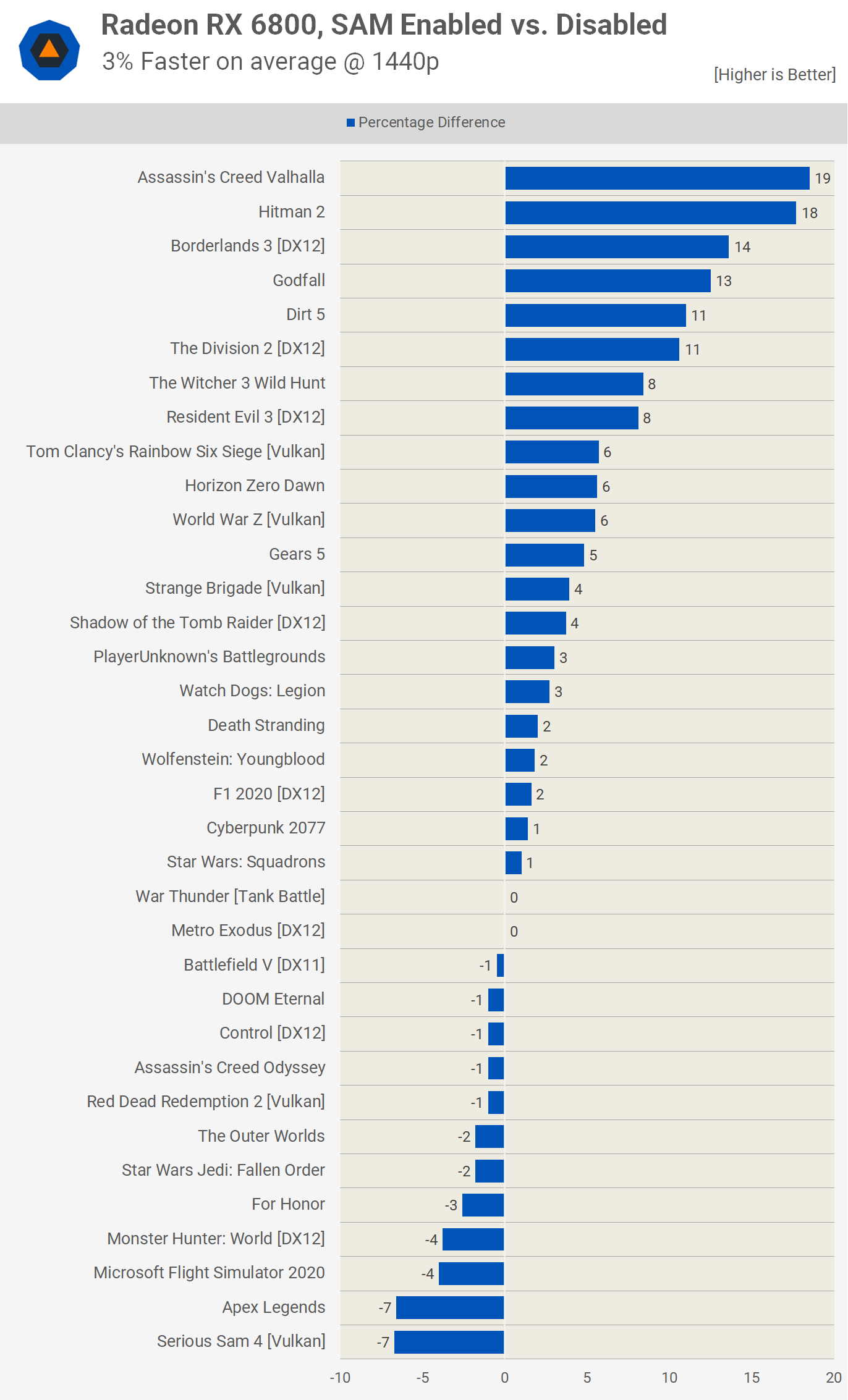
Moving to 1440p sees more of the same. This time we see 21 games with a difference of 4% or less in either direction. In other words, over half the titles we tested using SAM made little difference to the frame rate, resulting in a 3% increase on average across the 36 games tested.
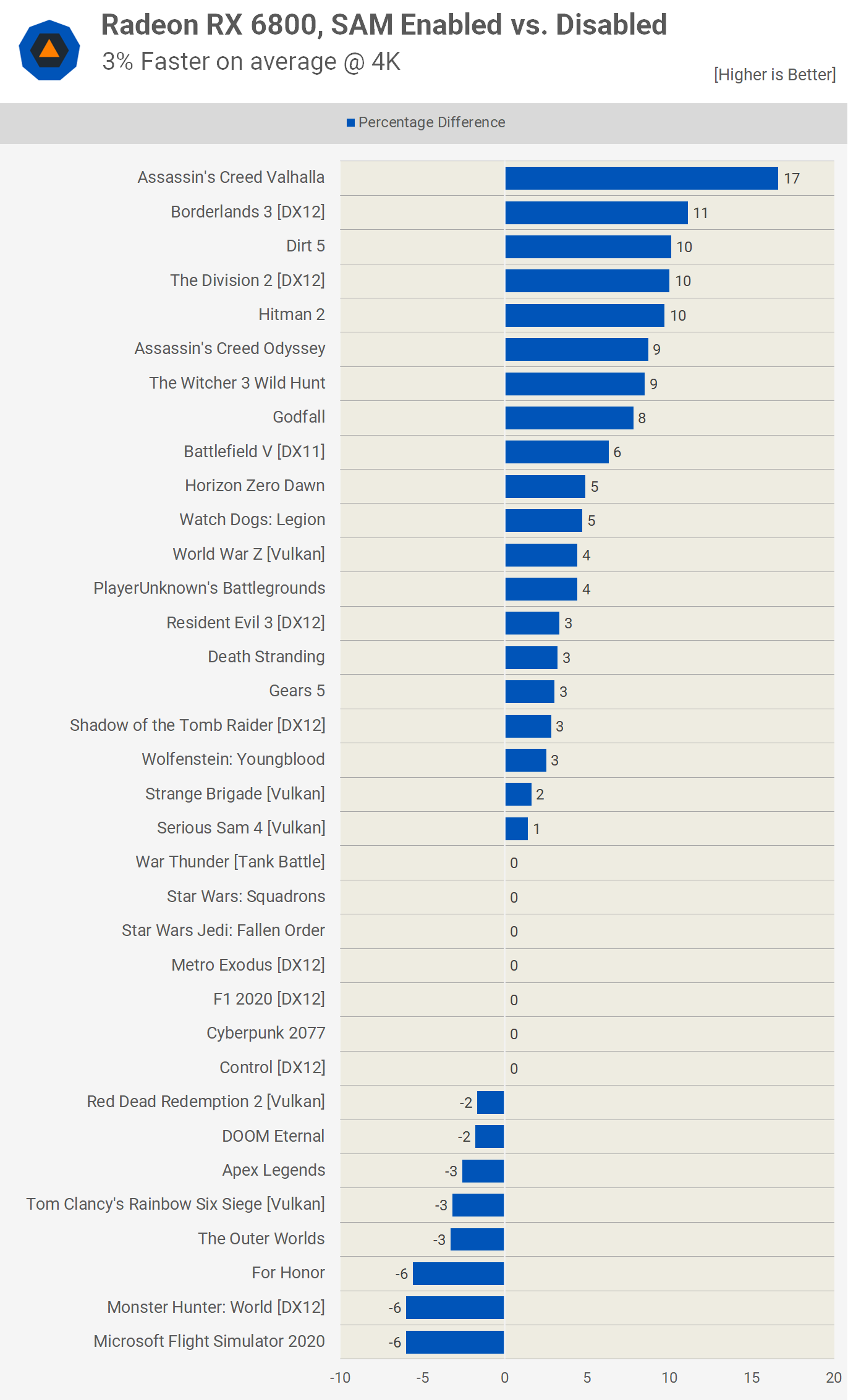
Then at 4K we're looking at an average performance uplift of 3% across the 36 games tested. 21 games saw a change of 4% or less with just 8 games showing an improvement of 8% or better.
What We Learned
Depending on the game, enabling SAM can be of great benefit though in some instances it can also be detrimental to performance. Now, because this isn't a feature you can simply toggle on or off between games as it requires a full system reboot, you're either going to game with SAM enabled or disabled. That being the case, it's worth checking to see if it offers anything in the games you play, or if it actually hurts performance.
As for our recent RTX 3070 vs RX 6800 benchmark comparison, had we enabled SAM it wouldn't have changed anything. The RX 6800 could have been ~14% faster than the RTX 3070 at 1440p, not 11% faster, and we seriously doubt that changes anything for you.
On a side note, it's likely going to be similar story with DLSS: if we enabled that technology in the games that support it, the RTX 3070 could have been faster overall, but that's a lot messier as it's no longer an apples to apples comparison. Regardless if you think DLSS looks better or not, it's no longer a like for like comparison, but ultimately when testing with such an insane volume of games, it does little to influence the overall result anyway.
As we said before, if the games you play support DLSS, the RTX 3070 is likely going to be the best option for you. Same goes for ray tracing, if that's a priority for you get the RTX 3070.
